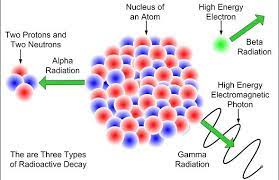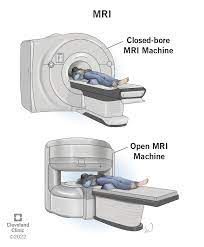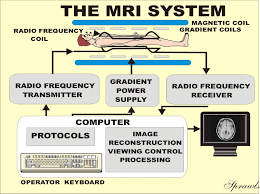SCIENCE AND TECHNOLOGY
What is the importance of science and technology in pakistan ?
Science and technology play a crucial role in the development and progress of Pakistan. Here are some of the reasons why they are important:
- %%Economic Development:%% Science and technology help drive economic development by improving productivity, creating new industries, and enhancing global competitiveness. Pakistan's economy can benefit greatly from the application of advanced technologies to various industries, such as manufacturing, agriculture, healthcare, and services.
- %%Education and Research:%% Science and technology are essential for education and research, as they provide a foundation for understanding the natural world and developing new technologies. Pakistan's universities and research institutions can benefit from greater investment in science and technology to build local research capabilities, attract global talent, and drive innovation.
- %%Health and Environment:%% Science and technology have a significant impact on human health and the environment. In Pakistan, improved access to medical technologies, telemedicine, and advanced treatments can help address health challenges such as chronic diseases and infectious diseases. Additionally, scientific research and innovation can contribute to addressing environmental challenges, such as climate change and air pollution.
- %%National Security:%% Science and technology are critical for national security, as they help improve defense capabilities, secure communication systems, and detect threats. Pakistan's military and security forces can benefit from the use of advanced technologies such as unmanned aerial vehicles, cyber security, and biometric identification systems.
In summary, science and technology are essential for Pakistan's economic growth, education and research, health and environment, and national security. Therefore, investing in science and technology is crucial for the country's progress and development.

What is the role of science in present day industrial production ?
Science plays a crucial role in present-day industrial production. Here are some ways in which science contributes to industrial production:
- %%Materials Science:%% Advances in materials science have led to the development of new materials with improved properties, such as greater strength, durability, and resistance to corrosion. This has helped manufacturers to produce more reliable and efficient products.
- %%Process Improvement:%% Science has enabled the development of new and improved manufacturing processes, such as automation, computer-aided design, and robotics. These technologies have made production faster, more efficient, and more cost-effective.
- %%Quality Control:%% Science has helped to improve the accuracy and reliability of quality control in industrial production. For example, advances in sensors and machine vision have made it possible to detect defects and anomalies in real-time, improving product quality and reducing waste.
- %%Environmental Sustainability:%% Science is playing an increasingly important role in developing environmentally sustainable industrial production methods. This includes the development of renewable energy sources, reduction of waste and emissions, and the use of biodegradable and non-toxic materials.
- %%Innovation:%% Science is essential for the development of new and innovative products and processes. This includes the creation of entirely new industries and markets, such as the development of nanotechnology or biotechnology, and the production of new materials such as graphene.
In summary, science plays a critical role in present-day industrial production, from materials science and process improvement to quality control and environmental sustainability. It is essential for developing new products and markets and for increasing efficiency and reducing costs in existing industries.

Describe the role of X-rays, and ultrasound in the diagnosis of diseases for treatment ?
X-rays and ultrasound are two important medical imaging techniques that are used to help diagnose and treat diseases. Here's how they work and how they are used:
- %%X-rays:%% X-rays are a form of electromagnetic radiation that can penetrate through soft tissues and create an image of bones, joints, and other structures in the body. X-rays are commonly used to diagnose fractures, dislocations, and other bone-related injuries. They can also be used to detect abnormalities such as tumors or calcifications. X-rays are a quick and non-invasive way to obtain images and are commonly used in emergency rooms and clinics.
- %%Ultrasound:%% Ultrasound uses high-frequency sound waves to create an image of soft tissues, such as the liver, kidneys, and uterus. Ultrasound is commonly used to diagnose pregnancy and gynecological conditions, as well as abdominal and pelvic conditions. Ultrasound is a safe and non-invasive method that does not expose patients to ionizing radiation.
Both X-rays and ultrasound have different advantages and limitations in diagnosing and treating diseases. X-rays are good for visualizing bones and other dense structures, but they are not as effective in imaging soft tissues. Ultrasound, on the other hand, is excellent for visualizing soft tissues, but it can be limited in visualizing structures that are deep within the body.
Both of these imaging techniques can help guide medical treatments, such as surgeries or radiation therapy. For example, X-rays can be used to guide the placement of surgical instruments or radiation beams. Ultrasound can be used to guide biopsy needles or other medical devices.
In summary, X-rays and ultrasound are two essential medical imaging techniques that are used to diagnose and treat diseases. Each technique has its own strengths and limitations, but they are both valuable tools for medical professionals in providing quality care to their patients.

Explain radioactive properties ?
Radioactivity is the property of certain atoms to spontaneously emit particles or energy in the form of electromagnetic radiation. This occurs because the atomic nucleus of these atoms is unstable, and undergoes decay to achieve a more stable configuration. The emitted particles or energy are called radiation, and the atoms that emit them are said to be radioactive.
There are three types of radiation that can be emitted by radioactive materials:
- %%Alpha particles:%% Alpha particles are positively charged particles that consist of two protons and two neutrons. They have a relatively high mass and low penetrating power, which means they can be stopped by a sheet of paper or the outer layers of the skin.
- %%Beta particles:%% Beta particles are high-energy electrons or positrons that are emitted from the nucleus of an atom during radioactive decay. They have a lower mass and higher penetrating power than alpha particles, which means they can penetrate deeper into materials, but can be stopped by a thin sheet of metal.
- %%Gamma rays:%% Gamma rays are a form of electromagnetic radiation that are emitted from the nucleus of an atom during radioactive decay. They have no mass and the highest penetrating power, which means they can penetrate through thick materials and are difficult to shield.
The process of radioactive decay is random, and the time it takes for a given quantity of a radioactive material to decay is called its half-life. This is the time required for half of the original atoms to decay and emit radiation. The half-life of a radioactive material can range from fractions of a second to billions of years, depending on the specific type of material.
Radioactivity can have both harmful and beneficial effects. Radioactive materials can be used in medical treatments such as radiation therapy to kill cancer cells, but can also cause harm if not properly handled and contained. Exposure to high levels of radiation can damage DNA and cause cancer and other health effects.
In summary, radioactivity is the property of certain unstable atoms to spontaneously emit particles or energy in the form of radiation. This process can have both beneficial and harmful effects, and requires careful handling and containment to minimize risks.

Explain the function of MRI and C.T scan ?
Magnetic Resonance Imaging (MRI) and Computed Tomography (CT) scan are two medical imaging techniques used to help diagnose and monitor a wide variety of diseases and conditions. Here's how they work and how they are used:
- %%MRI:%% MRI uses a strong magnetic field and radio waves to generate detailed images of soft tissues, such as the brain, organs, and muscles. MRI can provide high-resolution images with excellent contrast, making it an excellent tool for detecting and monitoring cancer, neurological conditions, and other soft tissue abnormalities. MRI is non-invasive and does not use ionizing radiation, making it a safer imaging option compared to CT scans.
- %%CT Scan:%% CT scan, also known as a CAT scan, uses a series of X-rays taken from multiple angles to create cross-sectional images of the body. CT scans can provide detailed images of the bones, organs, and tissues in the body, making them an excellent tool for diagnosing and monitoring a wide variety of medical conditions, including cancer, cardiovascular disease, and trauma. CT scans can be performed quickly and are widely available.
The main difference between MRI and CT scan is that MRI uses magnetic fields and radio waves to generate images, while CT scan uses X-rays. This difference in technology leads to differences in the types of images that can be generated, as well as the types of conditions that are best visualized with each modality.
Both MRI and CT scan are important tools in modern medicine, and each has its own strengths and limitations. While MRI is excellent at visualizing soft tissues and organs, CT scans are better suited for visualizing bones and other hard tissues. Additionally, CT scans are generally faster and less expensive than MRI, making them a more widely available option.
In summary, MRI and CT scan are two important medical imaging techniques that are used to diagnose and monitor a wide variety of diseases and conditions. Both techniques have different advantages and limitations and are commonly used in modern medical practice.

What is the technique of MRI [Magnetic Resonance Imaging]?
Magnetic Resonance Imaging (MRI) is a non-invasive medical imaging technique that uses a strong magnetic field and radio waves to produce detailed images of internal structures in the body. MRI works by detecting the signals emitted by hydrogen atoms in the body's tissues when they are exposed to a strong magnetic field.
Here is a step-by-step explanation of the MRI technique:
- A patient lies on a table that slides into the MRI machine, which consists of a large, cylindrical magnet.
- The magnetic field causes the hydrogen atoms in the body's tissues to align with the direction of the field.
- A radiofrequency pulse is then applied to the area of interest, causing the hydrogen atoms to absorb energy and become temporarily out of alignment with the magnetic field.
- When the pulse is turned off, the hydrogen atoms release the absorbed energy and "relax" back to their original alignment with the magnetic field.
- As the hydrogen atoms relax, they emit a weak signal that is detected by a set of receivers surrounding the patient.
- The signal is processed by a computer to generate detailed images of the area being scanned, which can be viewed and analyzed by a radiologist or other medical professional.
MRI is able to generate very high-resolution images of soft tissues, such as the brain, internal organs, and muscles, making it an extremely useful diagnostic tool for a wide variety of medical conditions. The technique is non-invasive and does not use ionizing radiation, making it safer than other imaging techniques such as X-rays or CT scans. However, MRI may not be suitable for some patients, such as those with certain types of metal implants, pacemakers, or claustrophobia.

What is the importance of sugar industry ?
The sugar industry plays an important role in the global economy, providing jobs and revenue to many countries around the world. Here are a few reasons why the sugar industry is significant:
- %%Economic impact:%% The sugar industry generates billions of dollars in revenue every year and provides employment to millions of people worldwide. Sugar production is a major industry in many countries, including Brazil, India, and Thailand, among others.
- %%Food and beverage production:%% Sugar is a key ingredient in many foods and beverages, such as soft drinks, candy, baked goods, and condiments. Without the sugar industry, many of the foods and drinks we consume every day would not be possible.
- %%Energy production:%% The byproducts of sugar production, such as bagasse, can be burned to generate electricity. This is an important source of renewable energy in many countries.
- %%Agriculture and land use:%% Sugar cane and sugar beet are crops that require large amounts of land and water to grow. The sugar industry therefore has a significant impact on agriculture and land use, particularly in developing countries.
- %%Trade and international relations:%% Sugar is one of the most heavily traded commodities in the world, and its production and trade can have significant political and economic implications. Sugar subsidies and trade policies are often a subject of international negotiation and dispute.
In summary, the sugar industry is an important sector of the global economy, providing jobs and revenue, supporting food and beverage production, contributing to renewable energy production, shaping agriculture and land use, and playing a role in international trade and diplomacy.

What you know about synthtic fibre ?
Synthetic fibers are man-made fibers that are designed to mimic the properties of natural fibers such as cotton, wool, and silk. Synthetic fibers are made from a variety of materials, including petrochemicals, coal, and cellulose.
Some of the most common types of synthetic fibers include:
- %%Polyester:%% Polyester is a synthetic fiber made from petroleum-based chemicals. It is known for its durability, resistance to wrinkles and shrinking, and ease of care.
- %%Nylon:%% Nylon is a synthetic fiber made from petroleum-based chemicals. It is known for its strength, durability, and elasticity, and is commonly used in the production of clothing, hosiery, and other textiles.
- %%Acrylic:%% Acrylic is a synthetic fiber made from polymers derived from coal, air, water, petroleum, and limestone. It is known for its softness, warmth, and resistance to wrinkles and shrinkage, and is commonly used in the production of sweaters, blankets, and other textiles.
- %%Rayon:%% Rayon is a synthetic fiber made from cellulose derived from wood pulp or cotton. It is known for its softness, absorbency, and breathability, and is commonly used in the production of clothing and textiles.
Synthetic fibers have several advantages over natural fibers, including their durability, resistance to shrinking and wrinkles, and ease of care. They are also often less expensive to produce than natural fibers. However, synthetic fibers are not biodegradable and can have a negative impact on the environment. In addition, synthetic fibers can sometimes be less breathable and comfortable to wear than natural fibers.
Overall, synthetic fibers have become an important part of the textile industry and are used in a wide range of applications, from clothing and textiles to industrial and technical applications.

What do you know about optical fibre system ?
Optical fiber systems, also known as fiber optic systems, are a type of telecommunications technology that uses thin strands of glass or plastic fibers to transmit data over long distances. Unlike traditional copper wiring, which transmits data using electrical signals, fiber optic systems use light to carry data.
Here are some key characteristics and components of optical fiber systems:
- %%Fiber optic cables:%% These cables are made up of bundles of thin, flexible fibers that are coated in a protective cladding. The fibers are usually made of glass or plastic and can be as thin as a human hair.
- %%Light sources:%% A light source, such as a laser or LED, is used to transmit light through the fibers.
- %%Connectors:%% Connectors are used to join fiber optic cables together and to connect them to devices such as transmitters, receivers, and switches.
- %%Receivers:%% Receivers convert the light signals back into electrical signals that can be interpreted by computers or other devices.
- %%Amplifiers:%% Amplifiers are used to boost the strength of the light signal as it travels over long distances.
- %%Multiplexers:%% Multiplexers are used to combine multiple signals onto a single fiber, allowing multiple users to share a single fiber.
Optical fiber systems are known for their high bandwidth, which allows them to transmit large amounts of data over long distances without degradation of the signal. They are also immune to electromagnetic interference, making them ideal for use in environments where traditional copper wiring would be problematic, such as near power lines or in areas with high levels of radio frequency interference.
Optical fiber systems are commonly used in telecommunications networks, including the internet backbone, as well as in cable television and telephone systems. They are also used in a variety of industrial and scientific applications, such as medical imaging and laser surgery.
